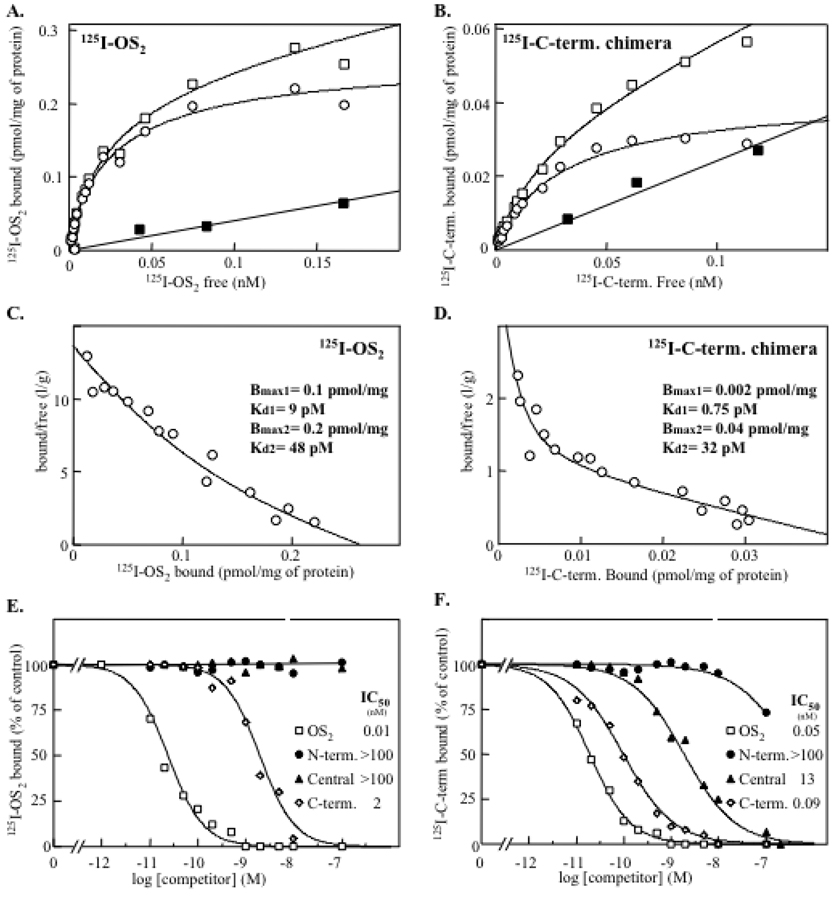Fig. 6.
Comparison of the binding properties of iodinated WT OS2 and C-terminal chimera to mouse brain membranes. All of the binding experiments were performed in parallel and on the same membrane preparations (n=3). (A and B), Direct equilibrium binding assays with the two iodinated ligands. Membranes were incubated with various concentrations of labeled ligands in the absence (*) or presence (—) of 100 nM unlabeled homologous ligand. The specific binding (▯) represents the difference between total (*) and non specific binding (—). (C and D), Scatchard plot analysis of the specific binding. (E and F), Competition experiments between iodinated ligands and unlabeled WT recombinant OS2 and the different chimeras. Membranes were incubated with 50 pM of WT 125I-OS2 or 125I-C-terminal chimera and various concentrations of unlabeled competitors. Results are expressed as the percentage of 125I-OS2 specific binding measured in the absence of competitor. The non specific binding was measured in the presence of 100 nM unlabeled homologous ligand and was below 15% of total binding.

